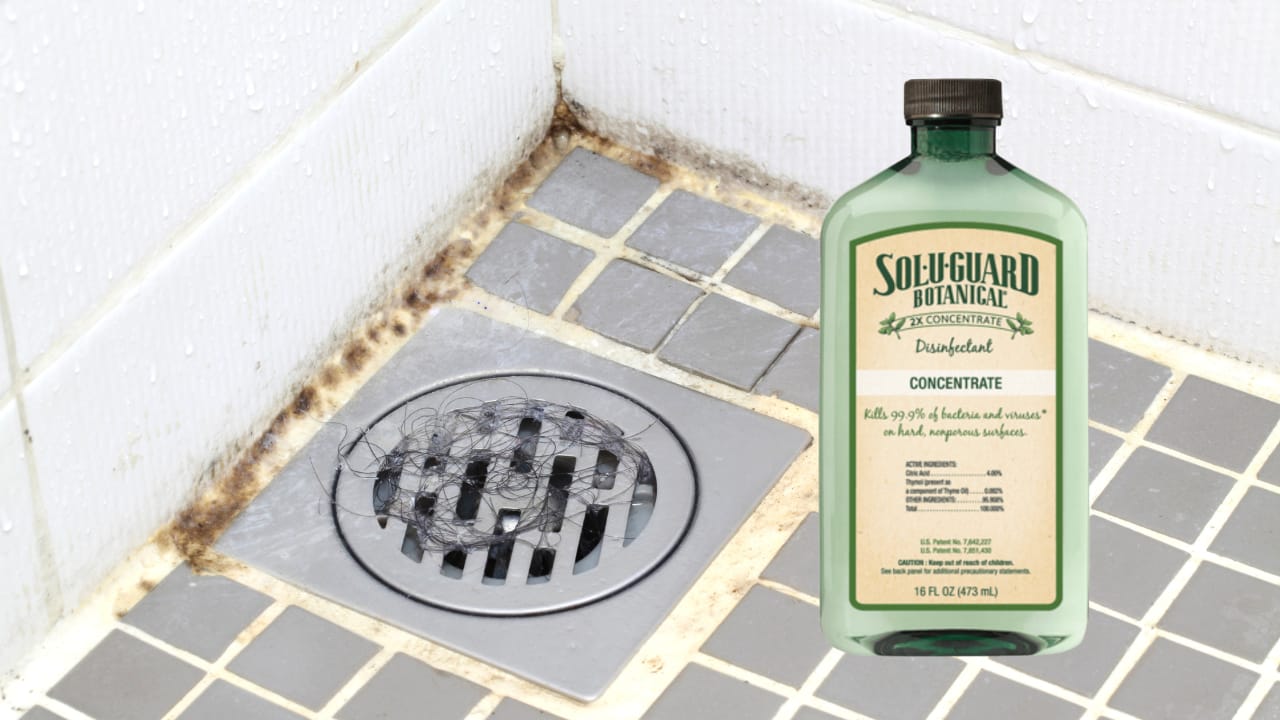
You might think your bathroom is clean — but mold hides where you least expect it. In fact, mold often begins behind grout lines, under bathroom vanities, inside tile joints, and even inside caulk. These hidden colonies release spores into your air and can worsen allergies, asthma, or irritate skin and sinuses. The good news? With the right tools and routine, you can remove them and stop them from coming back.
Why Hidden Mold Is Dangerous
Silent growth: Mold thrives in damp, dark environments. It often begins in small cracks, behind tiles, around showers, and under sinks — places you rarely inspect.
Health impacts: Even if mold doesn’t touch your skin, its spores can aggravate respiratory issues, allergies, or cause musty odors.
Structural damage: Over time, mold can degrade grout, weaken drywall, and damage finishes, especially in high-moisture rooms like bathrooms.
How to Detect Hidden Mold
Musty smell or persistent dampness — if a corner always feels damp or smells slightly earthy, mold may be lurking behind the walls.
Discoloration along edges or grout lines — watch for spots that don’t come off with regular cleaning.
Peeling caulk or grout — when caulk loosens or grout cracks, moisture can sneak behind the surface, creating a perfect mold environment.
Dark spots under vanities or around plumbing — check underneath sinks, behind baseboards, or inside cabinets for mold growth.
When you find it, act quickly. The longer mold remains, the deeper it can penetrate porous materials.
Safe, Effective Removal Methods
Below are gentle yet powerful methods — especially useful if you're aiming for natural solutions (without heavy bleach) — along with how Melaleuca-aligned cleaning products can help.
1. Tea Tree Oil (Melaleuca) Solution
Tea tree, derived from Melaleuca alternifolia, is a natural fungicide known to kill mold spores.
How to use it:
Mix 1 teaspoon of pure tea tree oil with 1 cup of water in a spray bottle.
Spray the mold-affected area generously and let it sit at least 1 hour.
Wipe away with a clean cloth — no need to rinse (the residual tea tree oil helps prevent regrowth).
⚠️ Always wear gloves and ensure good ventilation. Tea tree oil is potent and can irritate skin in undiluted form.
2. Vinegar & Baking Soda Combo
While vinegar alone can kill many mold species (about 80%) combining it with baking soda gives both cleaning and abrasion benefits.
Recipe:
Spray undiluted white vinegar on the moldy surface. Let it sit 30–60 minutes.
Sprinkle baking soda over the area, scrub gently (grout grooves, seams, etc.).
Wipe clean, re-spray with vinegar or a light baking soda-water mix, and let dry.
3. Use a Botanical Disinfectant
For tougher mold or multi-surface cleaning, a botanical disinfectant with essential oil protection is helpful.
One product you can use:
Melaleuca Sol‑U‑Guard Botanical 2× Disinfectant — a botanical, non-chlorine disinfectant that kills bacteria and fungi safely.
This product can be used (diluted per label instructions) on tiles, fixtures, sinks, and other bathroom surfaces to keep mold from returning.
Note: Always test on a small area first, especially on painted or delicate surfaces.
Step-by-Step: Deep Mold Removal Routine
Isolate the area — close doors, ventilate with a fan or open window, wear a mask, gloves, goggles.
Apply your chosen solution (tea tree mix, vinegar combo, or diluted botanical disinfectant). Let dwell 30–60 minutes.
Scrub thoroughly — use a soft brush, grout brush, or old toothbrush to reach seams, edges, and joints.
Rinse & dry — wipe away residues, then dry the surface fully using a squeegee or towel.
Inspect & re-treat — if stains or dark spots remain, repeat the application until fully removed.
Seal & prevent — re-caulk or re-grout if cracks are present to block water intrusion.
For porous surfaces (drywall behind tiles, ceiling panels), mold may be inside the material and might require replacement rather than cleaning.
Prevention: Your Best Protection
Ventilate while showering — run the exhaust fan and leave it on for 15–20 minutes afterward.
Squeegee walls and floors — remove residual water after each shower.
Fix leaks immediately — plumbing drips, loose pipes, or faucets create hidden moisture.
Keep humidity low (30–50%) — use a dehumidifier if your bathroom stays damp.
Use mold-resistant caulk and grout — these formulas contain fungicides to discourage growth.
Keep shower products off the floor — store them on racks or caddies so water doesn’t pool underneath.
Inspect behind vanities, under sinks — check monthly for changes or new dampness.
Because hidden mold often returns when conditions remain favorable, these habits are key to long-term control.
~ Richard M Barry
Ask Mela AI
Ask Mela AI for specific guidance on hidden bathroom mold — it can help you choose the right cleaning formulas, dilution steps, or prevention strategy based on your surfaces.
Here are some questions you could ask:
“How do I clean mold from grout between tile using Melaleuca products?”
“What’s the safest way to remove mold behind a bathroom vanity?”
“Can I use Sol-U-Guard in a bathroom after mold removal, and how do I mix it?”
“Which Melaleuca product is best for recurring mold on shower ceilings?”
“How often should I inspect behind caulk lines for hidden mold?”


